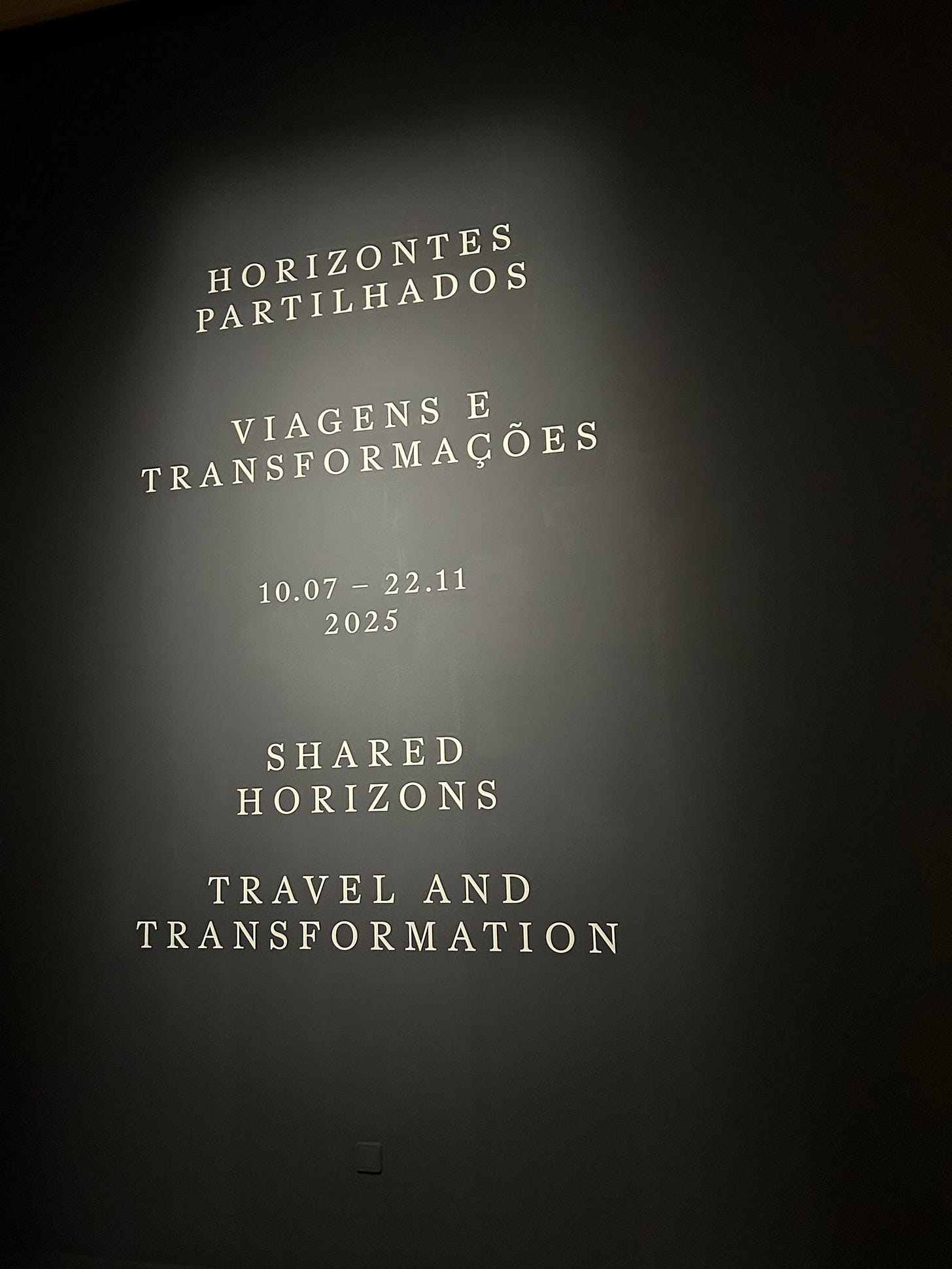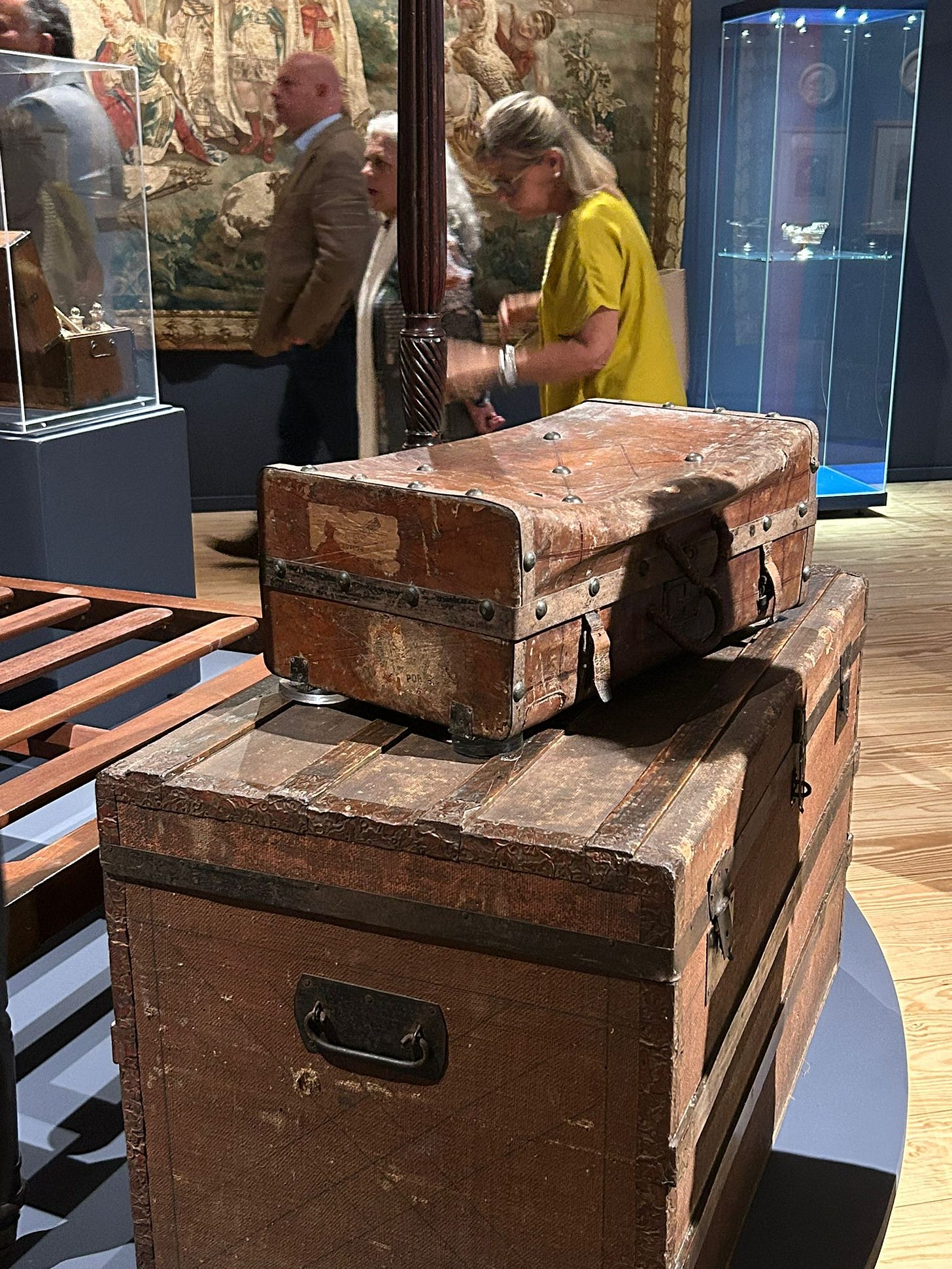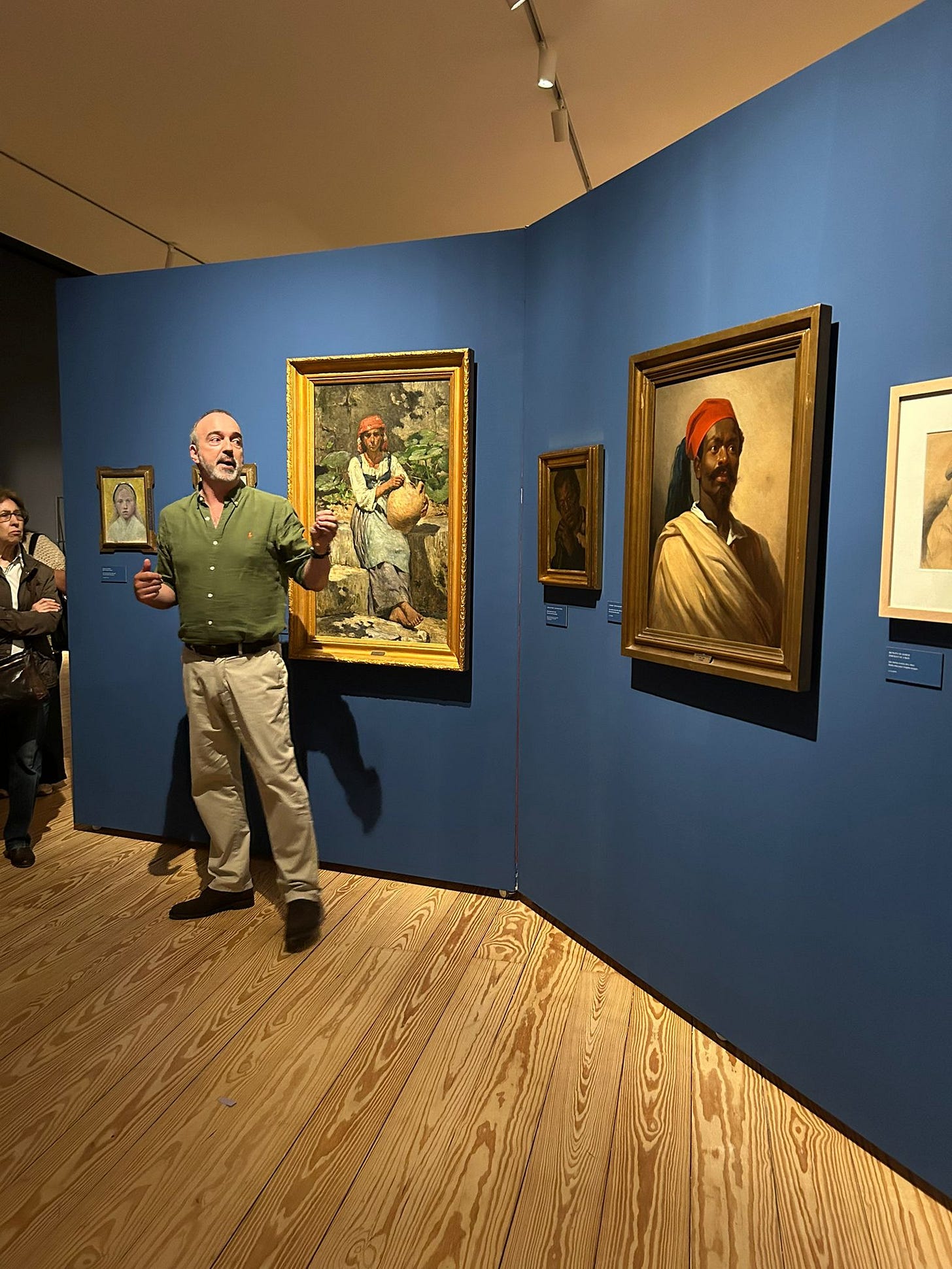Shared Horizons, Travel and Transformation
A few days ago, I had the time and opportunity to go to the inauguration of the new temporary exhibit at the National Museum Soares dos Reis. This exhibition interested me when I first saw on their social media that it was going to display objects from their reserves that the public hadn´t seen before. Why did this interest me? Well, we, the public, never see reserves, so without knowing, we never truly know a museum´s collection. To give you a notion, the National Museum Soares dos Reis has approximately 18 000 objects and their permanent exhibition displays more or less 1000 pieces.
This exhibition is focused on travels and the new horizons that open up. There are three facets to this exhibition, that were each explained to us by the three curators, so we got a very good explanation and insight into the making of this exhibit.
The first part was centered on objects that we associate with travels and different items we bring back. The first thing we see is this painting by John William Carmichael, that portrays the Douro river, where one side is the city of Porto and the other Gaia. Here we see a lot of figures in boats, which represents this form of travel which was very important. This artist spent three years in a boat moving from port to port between Portugal and Spain, something that I thought was a really cool fun fact.
Another set of paintings, this time by famed Portuguese artists, like José Malhoa, depicts the professions derived by travels, like watertravellers.
Watersellers by José Malhoa, c.1921
We also see the dark side of travelling, something that I thought was extremely responsible and conscious of the curators for including, because we know travels, like the Crusades, generated a lot of suffering and we shouldn´t forget this.
The Martyres of Morroco, 18th century
Here we see one of my favourite pieces which might seem insane because it´s just a very worn trunk. However, this very worn trunk belonged to Aurélia de Sousa, one of the most famous female Portuguese artists. I just found this really fascinating because it gave this historic figure and icon a human sentiment and I could really imagine her packing her bag and going on a trip.
Aurélia de Sousa´s trunk (top one)
The second part focuses on perspectives. What did Portuguese people think when they travelled? What did travellers think of Portugal? This part was very interesting because you can see a lot of depictions of people from around the world and also of different landscapes, like Venice or Fontainebleau. Here are what some of the Portuguese artists saw when travelling:
And now, for the vice versa, here is what travellers thought of Portugal. A detail I really liked from this part were the books about travels because, even though I don´t particularly read this type of literature, it fascinates me to think about other people´s opinions.
Travel books about Portugal
Finally, the third part centered on contaminations in art. By that, I mean how European tastes and preferences influenced oriental art, but…how did this fusion exist? European people were fascinated with the new types of materials that they had discovered. Most of us know about the spice trade and silk trade, which already demonstrates to us how big this interest was and now it was creeping up on art, especially decorative arts.
Decorative arts, like furniture and porcelain and others, were created with exotic materials, like different types of woods that were inacessible to Europeans…until the Discoveries. When Portugal arrived in India, we start to see this contamination that the exhibition focuses on, especially when we talk about furniture.
Here we see some drawers that are from Goa and it is fascinating how they use different types of wood and materials to create this exquisite pattern.
….and we come to the end of this little tour. I think this exhibition is pretty incredible and being given a tour guide by the curators is a very amazing experience and one that doesn´t happen a lot. If you are ever in Porto this summer, don´t forget to check out this exhibition and of course their permanent one, which is very well conceived.










